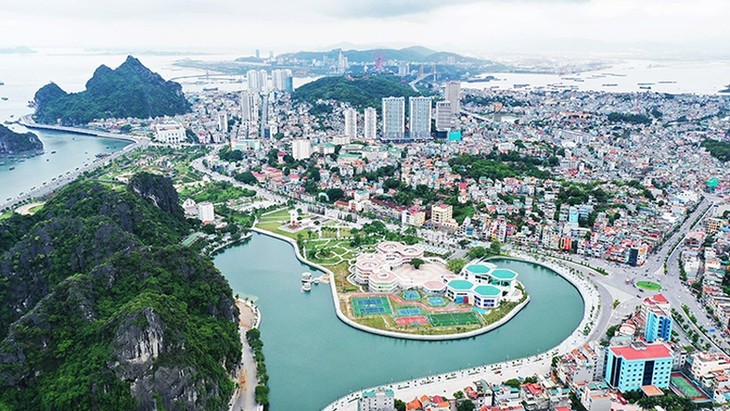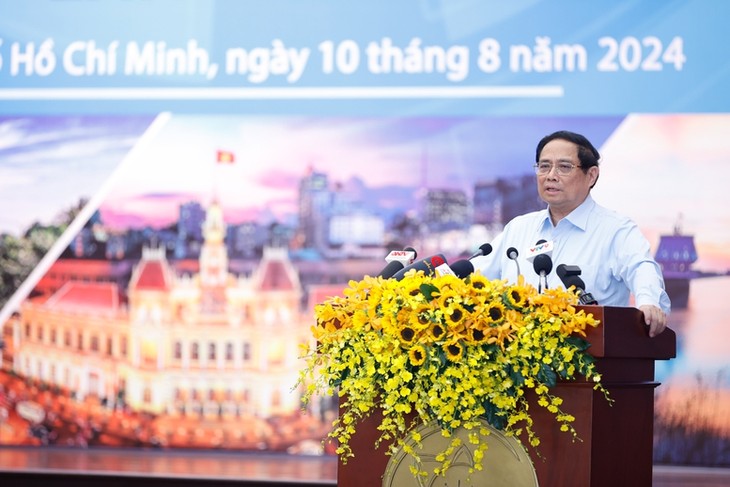(VOVWORLD) - Boosting regional development is a consistent policy of the Vietnamese Party and State, aiming to exploit and promote the local potentials and advantages. Zoning localities in regions has increased public investment, attracted investment for regional economic development, and created drivers for socio-economic development. Ministries, sectors, and localities are aiming to accelerate regional planning to create new breakthroughs in regional economic development, and achieve the goals set out in the National Master Planning for the 2021-2030 period, with a vision to 2050.
 Regional planning is a consistent policy of the Vietnamese Party and State, aiming to exploit and promote the local potentials and advantages. (photo: baochinhphu.vn) Regional planning is a consistent policy of the Vietnamese Party and State, aiming to exploit and promote the local potentials and advantages. (photo: baochinhphu.vn) |
The National Assembly’s Resolution on the National Master Planning for the 2021-2030 period, with a vision to 2050, divides the national socio-economic development space into 6 regions: the northern midlands and mountains, the Red River Delta, the north central and central coastal region, the Central Highlands, the southeastern region, and the Mekong Delta.
The southeastern region, the second smallest region in the country with 6 provinces and centrally run cities, is an economic locomotive, and a major contributor to economic growth, exports, the state budget, and job creation.
Southeast Region Planning aligns with National Master Planning
According to the Southeast Region Planning approved by the Prime Minister in May, localities in the region have numerous opportunities to make impressive breakthroughs.
The Southeast Region Planning for the 2021-2030 period, with a vision to 2050, aims to create breakthroughs, strengthen regional connectivity, and build a modern regional transportation system coordinating five modes of transportation.
The region will be the leader in developing a digital economy and a digital society, a center of economics, finance, trade, culture, education, science, and technology, and an international financial hub connecting global financial institutions and corporations. It will have a prominent position in Southeast Asia with its development on par with major cities in Asia.
 Prime Minister Pham Minh Chinh addresses the 4th Conference of the Southeastern Region Coordination Council. (photo: VGP/Nhat Bac) Prime Minister Pham Minh Chinh addresses the 4th Conference of the Southeastern Region Coordination Council. (photo: VGP/Nhat Bac) |
At the 4th Conference of the Southeastern Region Coordination Council last Saturday, Prime Minister Pham Minh Chinh, Chairman of the Council, said: “It is necessary to quickly and specifically implement the planning and closely coordinate localities and ministries in the region to solve problems and establish regional connectivity. First, we need speed up disbursement of public investment capital and attract investment resources for rapid and sustainable development. Second, it’s important to promote innovation and application of the Industrial Revolution 4.0, focusing on emerging industries such as digital transformation, green transformation, the circular economy, semiconductor chips, artificial intelligence, cloud computing, and hydrogen. Third, we need to enhance human resource training to create new drivers, contributing to one of the three strategic breakthroughs set by the 13th National Party Congress.”
Accelerating regional connectivity, creating breakthroughs in regional economic development
The Resolution of the 13th National Party Congress emphasizes organizing national territorial space properly, promoting the unique advantages of each region and locality, strengthening intra-regional and inter-regional connectivity, joining global value chains, and creating new development space. It’s necessary to exploit regional strengths in infrastructure, natural conditions, geopolitical location, and human resources.
In order to achieve the set regional development goals, the southeast region and the five other socio-economic regions have focused resources on upgrading regional infrastructure. National projects have been sped up so they can soon be put into operation. 1,700 kilometers of expressway are under construction across the country, including the North-South axis projects, the East-West axis projects, and projects in the Northwest and Central Highlands regions with 1,200 kilometers to be completed by 2025, which will lengthen the national expressway to about 3,000 kilometers.
Ministries, sectors, and localities are pressing the construction of the 500 kV circuit 3 from Quang Trach in Quang Binh province to Pho Noi in Hung Yen province, hoping to inaugurate the line on the occasion of the August Revolution and National Day on September 2.
At a meeting of the National Steering Committee on national projects and the Ministry of Transport last week, Prime Minister Pham Minh Chinh said: “These works will contribute to national socio-economic development, create new development space for industrial parks, service areas, and tourist areas, raise the added value of land, reduce logistics costs, improve the competitiveness of goods, and generate jobs. We need to stay determined, enhance our efforts, take decisive action, strengthen management, and focus on key issues.”
The planning of six regions in the 2021-2030 period, with a vision to 2050, issued by the Prime Minister is a step toward realizing the National Master Planning and major orientations on zoning development spaces, creating driving forces, and exploiting potentials to further the development of the region and the nation.